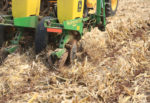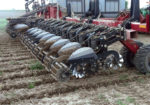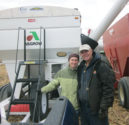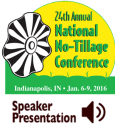Advertise Follow Us
Items Tagged with 'Profitable'
ARTICLES
No-tillers with a rotation that typically includes winter wheat might consider trying winter canola due to its higher prices, benefit to soybean yields and ability to loosen up the soil.
Read More
What I've Learned from No-Tilling
No-Till Shift Leads To Brighter, More Profitable Days
Embracing no-till 2 decades ago helped Carl Mattson preserve fragile soils, boost wheat yields and get an upper hand on problematic weeds.
Read More
Focus On Precision Technology Reaps Strip-Till Benefits
GPS guidance, variable-rate seeding and other technologies have provided Ohio’s Brian Watkins with a 145% return on investment.
Read More
No-Till Soybean Specialists Find Profitable Market Niche
After conquering the high-management requirements, Illinois no-tillers Matt and Connie Hughes are successfully no-tilling soybeans for seed production and raising non-GMO varieties to capture rising premiums.
Read More
Matching Nitrogen Rates To Strip-Till Profitability
Through research, Minnesota strip-tiller David Legvold and college senior Emma Cornwell found the most profitable rate of sidedressed liquid 28% isn’t always the highest rate.
Read More
No-Tillers More Profitable Than Conventional Farmers
Long-term economic study of Kansas farmers shows how controlling costs provides consistent bottom-line results.
Read More
PRODUCTS
Improve Your Chances of Raising Profitable No-Till Corn, Soybeans - Marion Calmer - NNTC 2016 Presentation - MP3 Download
$19.95
When considering the ways of improving his chances of raising profitable no-tilled corn and soybeans, Marion Calmer, a veteran no-tiller from western Illinois, relies heavily on his 31 years of independent on-farm research. As the president of Calmer’s Agronomic Research Center, he’s learned that the highest yield isn’t always the most profitable, so he makes decisions regarding inputs based on facts and financial sense. In this presentation, Calmer talks about his target of a minimum 35% return on investment for his farm when calculating input costs, and also discusses the yield impact and economic implications that accompany increasing populations, fertilizer inputs, row spacing and the lack of tillage.
View










